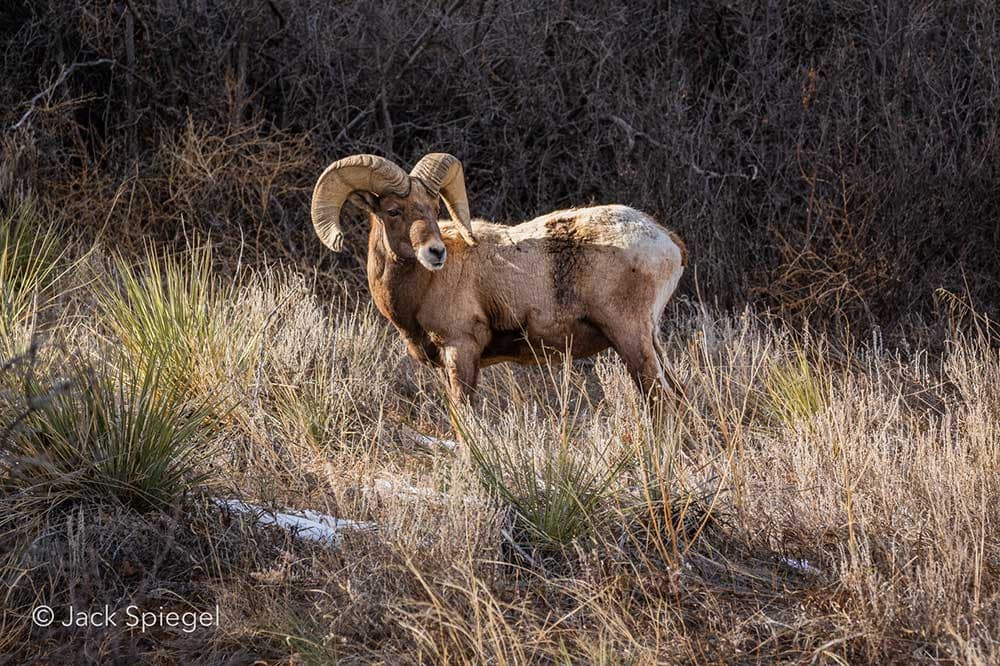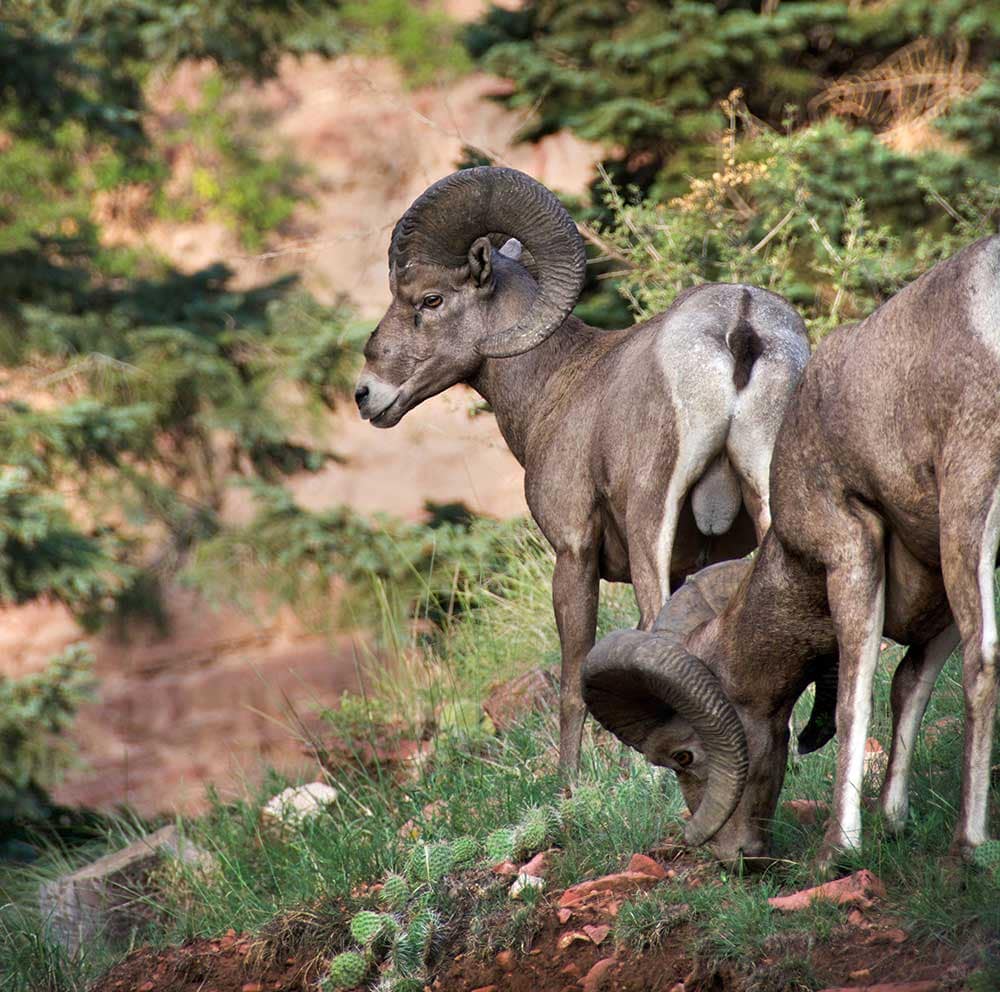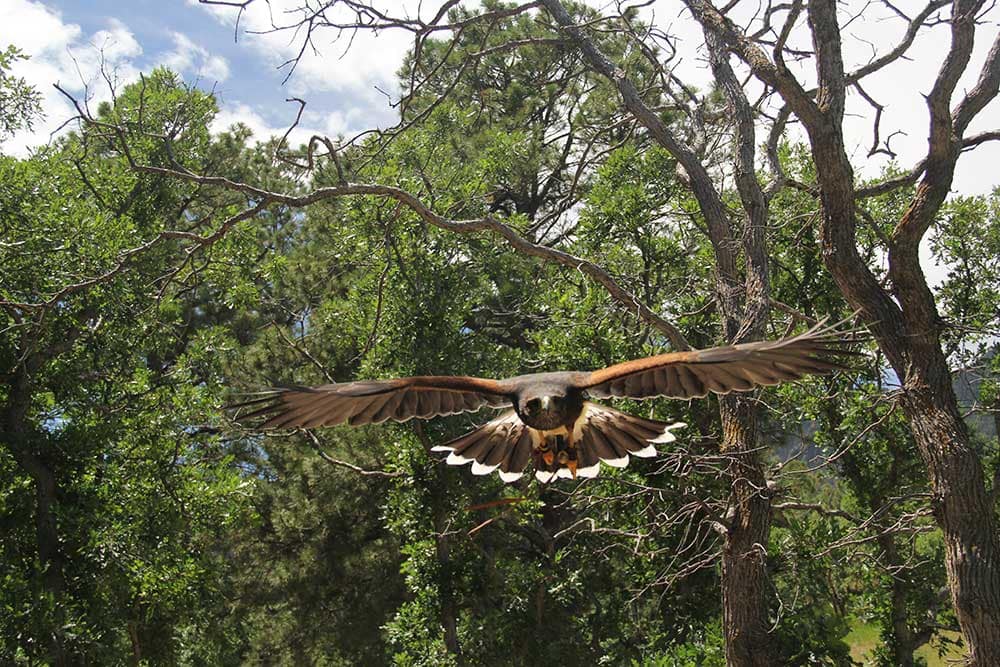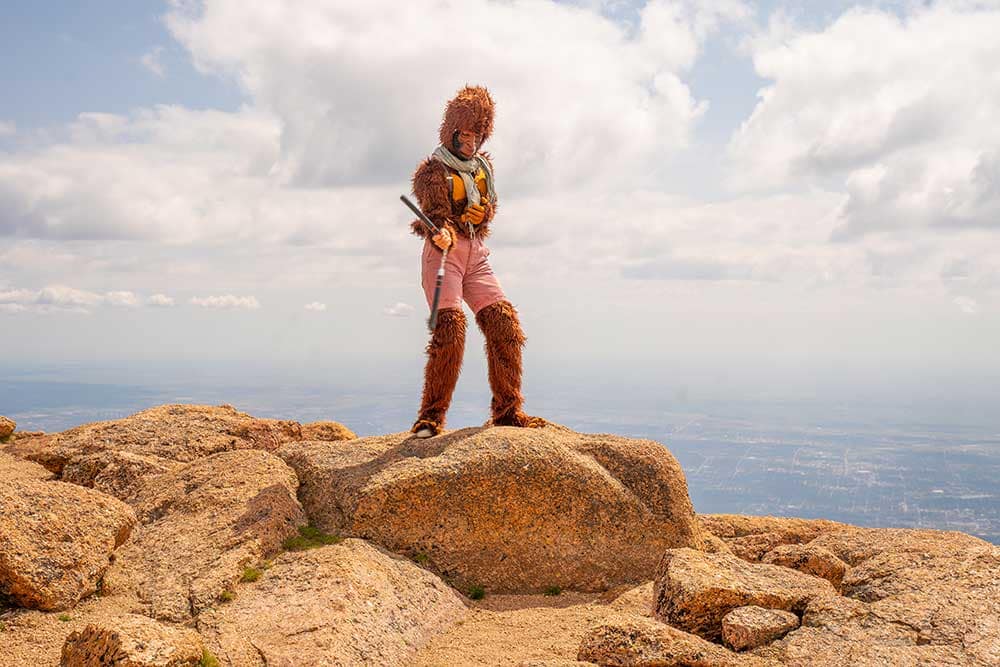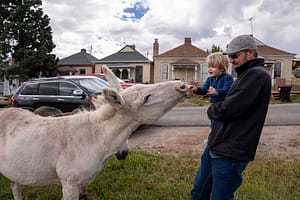Colorado Wild Animals: Elusive Edition
Welcome back to our continuing series on the wild animals of the Colorado ecosystem. We’ve shared the adorable, the odd and the dangerous; now we’re introducing the elusive animals that evade our gaze when we are out amongst the trees and trails of the Pikes Peak region. Some of Colorado’s creatures use clever camouflage to hide in plain sight. Others use their natural environment to boost their sneak factor and still others are almost never encountered at all. Read on to learn all about the more mysterious animals that live within the Centennial State.
Rocky Mountain Bighorn Sheep
Colorado Springs and the surrounding regions are home to several herds of Rocky Mountain bighorn sheep. Whether or not you can spot them, however, depends on chance — and how well you are paying attention. Their tawny coats help them blend into the landscape with near-magician status, so they can be quite difficult to detect. Most visitors to the Pikes Peak region will encounter the herds when they are on the move, like crossing the road in Garden of the Gods, for example.
The sheep are large, with impressive, curling horns that make them a powerful foe during mating season. Humans should take care to keep their distance from the feisty critters. The National Park Service says they can hit speeds of 40 miles per hour before ramming their target. Males can reach more than 350 pounds in their lifetime, too. In short, don’t make them grumpy and stay out of their space. Check out Garden of the Gods (a world-famous herd) and Pikes Peak for the chance to spot them close to home. Branch out to areas like the Royal Gorge and Arkansas River for another opportunity.
Colorado Trout and Bass
Depending on who you talk to and what tackle they’re using, Colorado trout and bass are either super easy to catch … or a mythical species that doesn’t actually exist. Judging by the people lining the Arkansas River or the kayaks and canoes floating serenely on Pikes Peak’s glimmering reservoirs, there are plenty of fish in the sea — if you have the right bait. Colorado is home to multiple types of wild trout, including the flashy rainbow trout, native cutthroat trout, brook trout and brown trout.
Bass are also no stranger to Colorado waters. The largemouth bass was the first recorded instance of new fish being imported into Colorado rivers and lakes. The smallmouth bass wouldn’t be added for another 70+ years, but it is a favorite for shoreline fishing (and bored kids who crave more excitement, per Colorado Parks and Wildlife). You can find these fish throughout the Pikes Peak region. Check out the reservoirs along the Pikes Peak highway for an easy place to find several variations. Be sure to follow all laws regarding licensing and keeping your catch.
Eagles and Hawks
Colorado is home to several birds of prey, with eagles and hawks reigning supreme in their mastery of the sky. These two types of radical raptors both belong to the family Accipitridae, but they have several differences. Colorado is home to just two species of eagles. The first is the magnificent golden eagle is a lovely brown color with golden highlights along their necks. They might appear unassuming in the sky, but this predator is masterful, with a sharp beak and sharper claws. The second eagle found in Colorado is far easier to identify, as it is the well-known bald eagle (AKA, the national bird of the United States).
When it comes to hawks, the red tail is by far the most common species in Colorado. With brown shoulders, a tan breast and a bright brownish-red tail, they are also easier to spot if you know where to look. They love to rest on telephone poles, in trees and on fence posts. They blend in seamlessly with the landscape, so you have to pay close attention to spot one. Both types of raptors tend to leave humans alone, but they will attack if you get too close to their nest. If you spot one in the area, pay attention to its behavior to ensure you don’t have an unforgettable wild encounter.
Rocky Mountain Elk
Elk are massive and mighty creatures that are far less common than the copious amounts of deer that roam Colorado Springs. Despite fewer sightings, Colorado is home to the largest number of elk in the entire world. Currently, Colorado Parks and Wildlife report there are more than 280,000 elk in the state. That number is the result of a massive conservation effort to replenish the population after numbers dropped in the 1900s.
Elk are typically brown, with fur that transitions in shade and brightness through the change of the season. The male elk’s antlers are enormous, weighing as much as 40 pounds. The impressiveness of a set of antlers is usually related to the number of “points” that grow on each one. Some bull elk have a dozen points per antler! The width of the antlers from end point to end point can be up to 48 inches. Elk can be aggressive, especially during mating season. They also go through a horrifying shedding period during which the antlers lose the velvety covering in a rather bloody fashion. Adding to the oddity that is the Rocky Mountain elk is their way of communicating — via an ethereal sort of whistle that echoes through the hills.
Sasquatch
Sasquatch, also referred to as “Bigfoot” by prominent cryptozoologists, is probably the most elusive creature on the list of Colorado critters. In all the decades of credible tracking, only 130 sightings have been recorded in the state of Colorado. Only 7 of those sightings have occurred in El Paso County and an additional 9 sightings have been reported in the neighboring Teller County. That’s vastly different from the state of Washington, which boasts more than 700 sightings, but it’s still a respectable number for a creature that has never been captured.
The sasquatch is a shy creature that will avoid human encounters if at all possible. Its dark fur allows it to blend in amongst the tree trunks and camouflage itself in the shadows. None of Colorado’s 130 Bigfoot encounters have ever resulted in injury. Some individuals have reported eyestrain while trying to view blurry encounter videos. Some cryptozoologists speculate that the sasquatch emits a field that interferes with electronics, hence the blurry imagery that is a signature of most sighting clips. Bigfoot is deep brown with a humanoid shape. It is also taller than most humans and covered completely in fur. If you encounter a sasquatch, stay calm! They will run away if given the chance, so take a step back, make yourself look harmless and wait.
This handy little guide to the more elusive creatures of the Pikes Peak region should make it far easier for you to spot them when you’re out in the wild. Bring binoculars, charge your phone (for glitchy Bigfoot selfie videos) and prepare to be amazed. It’s amazing what you can see when you know what you’re looking for!
